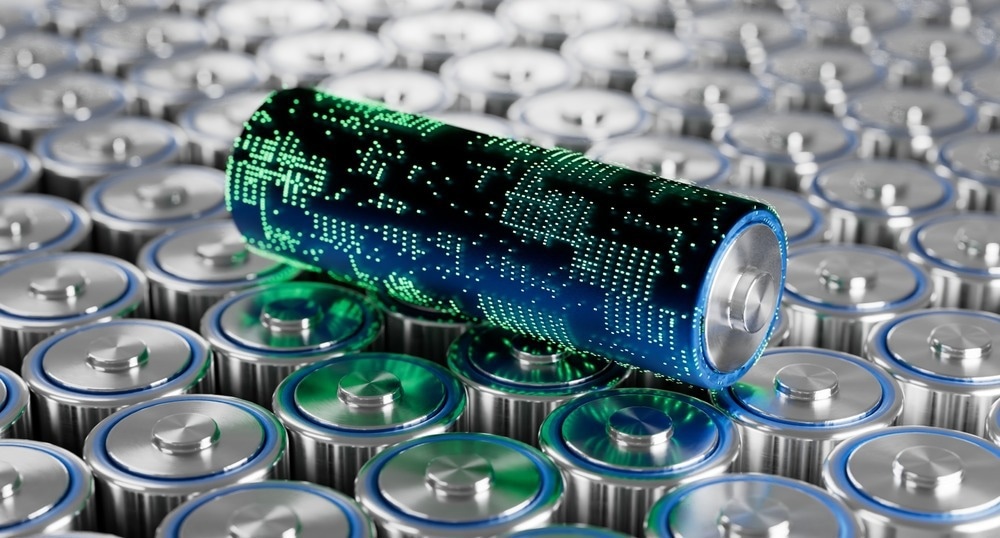A group of researchers recently published a paper in the journal Carbon Energy that investigated the feasibility of using isosorbide dinitrate (ISDN) in place of lithium nitrate to manufacture stable lithium metal batteries with superior lifespans for practical applications.

Study: Highly soluble organic nitrate additives for practical lithium metal batteries. Image Credit: JLStock/Shutterstock.com
Background
Electrochemical energy storage devices, such as rechargeable batteries, play a crucial role in using the energy generated from intermittent renewable sources. High energy density devices/batteries, such as lithium metal batteries, are gaining considerable attention due to the rapid development of electric vehicles and portable electronics.
Lithium metal batteries possess over 400 Wh kg−1 practical energy density at the cell level due to the low reduction potential and a high theoretical specific capacity of 3860 mAh g−1 in lithium metal anodes.
However, lithium metal batteries typically have a short lifespan due to the instability of the lithium metal anodes, specifically under demanding/practical conditions when lean electrolytes and high-loading cathodes are utilized.
LiNxOy‐containing solid electrolyte interphase (SEI) produced by the decomposition of electrolytes critically impacts the lithium metal anode stability by influencing the lithium deposition behaviors. However, SEI induces non-uniform lithium deposition as it is typically heterogeneous in nature, which leads to the formation of lithium dendrites
The lithium dendrites can crack the SEI and expose the active lithium, leading to continuous reactions between electrolytes and lithium. The repeated lithium dendrite growth, SEI reconfiguration, and SEI fracture result in a rapid depletion of lean electrolytes and a limited lithium reservoir, which eventually reduces the lithium metal battery lifespan.
Thus, realizing homogenous SEI is crucial for uniform lithium deposition and fabricating long-cycling lithium metal batteries. SEI homogeneity can be manipulated through electrolyte regulation. The use of additives is considered a convenient and effective approach to enhancing SEI.
Lithium nitrate has been used extensively as a sacrificial additive to protect lithium metal anodes from dissolved polysulfides. However, the solubility of lithium nitrate in ester electrolytes is extremely low, which hinders the application of lithium nitrate in lithium metal batteries with high-voltage cathodes.
Although solubilizers, such as tris(pentafluorophenyl)borane and copper (II) fluoride, have been used to improve the solubility of lithium nitrate, the solubility remained extremely low at less than 0.12 M in ester electrolytes. Thus, new additives must be identified that are highly soluble in ester electrolytes and can ensure SEI homogeneity to realize stable lithium metal anodes.
The Study
In this study, researchers used ISDN, an organic nitrate, as an additive in place of lithium nitrate and investigated its effectiveness in stabilizing lithium metal anodes. Lithium metal, polyethylene (PE) separator, copper foil, dimethyl carbonate (DMC), fluoroethylene carbonate (FEC), lithium hexafluorophosphate, ISDN, and 13 mm LiNi0.5Co0.2Mn0.3O2 (NCM523) cathodes were used as the starting materials in this study. Lithium metal was rolled on copper foil and then punched into 15 mm disks.
A neware battery cycler (CT‐4008T) was used to perform the electrochemical measurements on symmetrical 50 μm lithium|50 μm lithium cells, 600 μm lithium|copper cells, copper|NCM523 cells, and lithium|NCM523 cells. A 2025‐type coin cell was used as the battery configuration during the electrochemical measurement.
Cyclic voltammetry (CV) tests and electrochemical impedance spectroscopy (EIS) were performed using the Solartron 1470E electrochemical workstation. The ionic conductivity was determined in a glove box using a Rex conductivity meter.
7.0 × 4.0 cm2 Li|LiNi0.8Co0.1Mn0.1O2 (NCM811) pouch cells with 50 μm lithium foils were synthesized in a dry room at −40 °C. The cathode areal capacity was 5.6 mAh cm−2 for every side. Both anodes and cathodes were stacked in a layerwise manner using a PE separator. The pouch cell was evaluated at 0.1 C.
Scanning electron microscopy (SEM) was used to observe the lithium metal anode morphologies. Lithium hexafluorophosphate in DMC/FEC was used as the base electrolyte due to its superior performance in lithium metal batteries.
Significance of the Study
The use of ISDN effectively addressed the issue of the low solubility of lithium nitrate additives in ester electrolytes and increased the SEI homogeneity significantly, which stabilized the lithium metal anodes.
ISDN with nitrate and organic groups displayed a high solubility of 3.3 M in ester electrolyte/FEC/DMC owing to the good compatibility between the organic groups present in the ISDN molecule and ester solvents. LiNxOy‐rich SEI was generated due to the favorable reactions between the lithium metal anodes and ISDN, which improved the lithium deposition uniformity.
Under practical conditions, lithium|NCM523 batteries with ISDN additives demonstrated a superior lifespan of 155 cycles compared to 80 cycles displayed by the control batteries based on 80% capacity retention. The 5.4 Ah pouch cell with ISDN showed 439 Wh kg−1 initial specific energy and a lifespan of 50 cycles with 62.5% capacity retention.
To summarize, the findings of this study demonstrated the feasibility of using ISDN as a highly soluble organic additive to manufacture stable lithium metal batteries by overcoming the limitations of existing lithium nitrate additives.
Disclaimer: The views expressed here are those of the author expressed in their private capacity and do not necessarily represent the views of AZoM.com Limited T/A AZoNetwork the owner and operator of this website. This disclaimer forms part of the Terms and conditions of use of this website.
Source:
Zhang, Q., Zhang, Y., Zhang, X.-Q. et al. Highly soluble organic nitrate additives for practical lithium metal batteries. Carbon Energy 2022. https://onlinelibrary.wiley.com/doi/full/10.1002/cey2.28